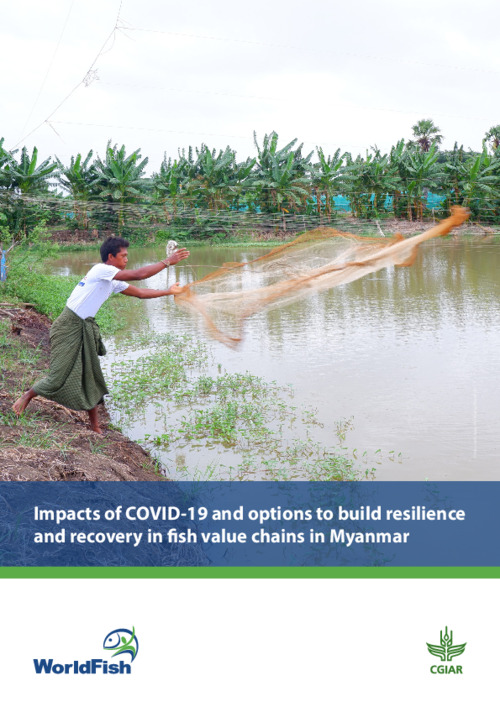Impacts of COVID-19 and options to build resilience and recovery in fish value chains in Myanmar

This report focuses on assessing the impacts of COVID-19 and options to build resilience and recovery in fish value chains in Myanmar. A mixed-methods approach, comprising a quantitative survey and qualitative interviews and in-depth discussions, was used to implement the study. For the quantitative survey, we adapted the survey tool used in Belton et al. (2021). Common key indicators covered in the quantitative survey of value chain actors included average sales price, quantity of fish sold, cost of inputs and the quantity of inputs bought by different fish value chain actors. In total, 148 actors along the fish value chains in Myanmar in 2021 were interviewed by telephone, of which 103 participated in the 2020 survey, as reported in Belton et al. (2021). For the qualitative interviews, a semi-structure questionnaire checklist, key informant interviews and in-depth discussions guides were used to carry out with 56 agri-food and fish value chain actors in KenTung Township and Lampi Community in Kaw Thaung District.
The overall findings are as follows:
Impacts of COVID-19 on fish value chains were more severe in 2021 than 2020 because of prolonged pandemic and stricter measures implemented to contain the spread of the virus as well as the political instability in Myanmar since the beginning of 2021.
Sales of farmed fish dropped significantly in 2021 from 2020. Most notably, the total cost bought by the surveyed farms outweighed the total sales earned in March 2021.
The quantity of processed fish sold was significantly higher in 2021 than 2020.
A diverse fish products especially high value fish species were traded with higher prices in 2020 than 2021.
Surveyed respondents have adopted different coping mechanisms to build recovery and resilience during this ongoing crisis. Among the most common practices are borrowing, using savings and buying inputs on credit.
Permalink
Date Available
Type
Publisher
Countries
Copyright
CC-BY-NC-4.0
Research Themes
Topics
Language